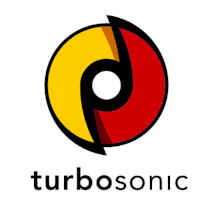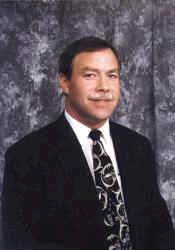CEOCFO-Members Login
Become A Member!
|
This is a printer friendly page!
TurboSonic increases its
presence in Europe, adding to its current markets in North America,
South America and China, while diversifying product offerings, to eliminate dependence on
any one product or geopolitical influence

Engineering Services
Air Pollution Control
(TSTA-OTC: BB)
TurboSonic Inc.
550 Parkside Drive, Suite A-14
Waterloo, ON, Canada N2L 5V4
Phone: 519-885-5513

Edward F. Spink
Chairman and CEO
Interview conducted by:
Lynn Fosse, Senior Editor
CEOCFOinterviews.com
Published - February 1, 2007
BIO:
C.E.O. and Chairman of the Board - Edward F. Spink
Edward Spink has completed 24 years as a Senior Executive with TurboSonic and has
participated in the development of the Corporation and its technology from inception. His
leadership and hands-on management style is exemplified by the continued profitable growth
of the Corporation. He possesses an excellent engineering knowledge of the TurboSonic
technology and is regarded as an expert in the air pollution control industry. Ed has
focused TurboSonic's research and development efforts, where possible, on economic payback
to investment and superior performance technology in meeting or exceeding regulatory
compliance. He possesses an Honours degree in Business Administration from Wilfrid Laurier
University.
Company Profile:
TurboSonic Inc. has applied its proprietary air pollution control technology to a wide
variety of air pollution control problems for industries ranging from pulp and paper, wood
products, ethanol, mining, non-ferrous metallurgical, iron and steel, chemical, waste
processing, waste incineration, power generation, and cement.
TurboSonic products offer economic and technical
advantages over conventional equipment and are designed to meet the strictest emission
regulations.
TurboSonic has maintained their status as a leader in
air pollution control technologies through continued research and development programs
aimed at creating innovative cost-effective technologies.
CEOCFO: Mr. Spink, what was your
original vision and what is your vision today at TurboSonic?
Mr. Spink: “When I started with
TurboSonic 27 years ago, we wanted to develop the best air pollution control technology at
the best price. The dream in any business is to have the best product and the best price
combination. We have a number of things we are working on at present that are promising to
help us reach that goal. From the beginning, we have prided ourselves in the in-house
development of our technologies. Our experience in various industries, allows us to
identify market needs and respond to those needs with the development of new technologies.
Since they are, in effect, “sponsored” by the client, the technologies are
readily accepted by the industry partner, making commercialization faster.”
CEOCFO:
Will you tell us about some of the newer products?
Mr. Spink: “One of the newer things
that we are involved in now is alternative materials of construction. You are probably
aware of how the cost of commodities has increased over the last few years, particularly
alloys such as stainless steels and higher alloys, which in some cases are in the $20 to
$40 per pound range. Although their use is necessary, the cost is quite prohibitive. We
are working on the development of alternate materials to replace these high priced alloys.
The benefit of an alternate material, not only gives us an advantage in the marketplace
for our own equipment, but it also has wider applicability across all industries and all
uses of these alloys. For example, a module constructed of a high alloy, would cost
approximately $1.2 million per unit, whereas the same module constructed using the
materials we are developing, would cost about $250 thousand, which is about a five to one
ratio.”
CEOCFO:
Are your products off-the-shelf, or do you strictly design by request?
Mr. Spink: “Our products are both
off-the-shelf and custom-designed; modular in one sense and customized in another sense.
Each customer has a unique set of issues that they deal with, such as process gas flow
rate, temperature, moisture content and contaminants, which are rarely exactly the same;
therefore, you have to customize material of construction and sizing of equipment. In
addition, the components that make up a total solution can vary. For example, in some
cases, our TurboVenturi Quencher Pre-Scrubber can be placed ahead of our SonicKleen Wet
Electrostatic Precipitator in a modular fashion, so that each one has a design basis, but
work in tandem. We have automated our design process using 3-D ACAD and computerized
sizing and quoting, from input of the client’s process data, through to the quotation
and product development process. This streamlining of our design process results in
reduced overhead costs and brings us to an optimum cost and profitability standpoint.”
CEOCFO:
Will you tell us about the industry in which you are competing and the market opportunity
in general?
Mr. Spink: “Due to heavy competition in
the marketplace, we strive to be innovative. The goal is to advance your technology base
and become the leader in a particular field. In addition, there are many niche areas. We
have focused on the wood products and ethanol industries over the last number of years,
and have been very successful. There are companies that are by definition competitors of
ours, yet we don’t often run into them because they have picked certain niche
markets, whereas we have chosen others that are particularly well suited to our knowledge
base. We certainly have competitors in each of those areas; however, we focus on the
knowledge base of our clientele and on developing products that satisfy their needs and
concerns. For example, in the wood products industry we have applied for quite a number of
patents, some of which have recently been approved and will be issued in the near future.
We recently won a $6.7 million US contract, and it was stated that the main reason we were
awarded the contract was because of a new patent application we had submitted. This is
evidence of the innovation factor parleying into success in the marketplace.”
CEOCFO:
You have had a number of orders recently from Europe; is there a particular thrust into
the European market for you?
Mr. Spink: “We are fortunate that we
were able to secure the services of Luca Finzi, former president of Hamon
Research-Cottrell USA. Mr. Finzi, knows the marketplace and the industry, and has an
excellent network of contacts in Europe. He has been instrumental in our initial success.
When breaking into a new market, the typical break-even point is two years; however, we
have already surpassed this goal in just a number of months. We see great promise here and
have barely scratched the surface. We are also conducting pilot tests in Europe,
developing new technology for specific clients. Everything is coming together and we
believe that our investment in the European operation is going to give us a very handsome
payback in the very near future.”
CEOCFO:
Do you need to expand your manufacturing or basic facilities as you grow?
Mr. Spink: “We do not do in-house
manufacturing, although the new materials we are working on will put us into a different
scenario. We do not have a limitation in growth based on production, because we
subcontract the actual fabrication. As a result, we can build locally or close to the
jobsite, wherever it makes sense. We are not restricted in any way and I think given the
changing global market, this is a good position to be in. I find it amazing that it’s
cheaper to fabricate in China and ship here, and although I am not a great believer in
doing that, it is pretty compelling.”
CEOCFO:
What do you see for the pollution control industry going forward and with the new congress
in the US do you see any changes of which you could take advantage?
Mr. Spink: “Definitely. When you look
at the political climate, Canada has lagged behind the lead of the United States and their
environmental regulations, under a republican controlled congress and presidency. With a
democratic controlled congress, the strong initiatives by the US, leading the world in
pollution abatement regulation, will accelerate. There are certain areas, especially in
power-generation and quite a number of other industrial segments that certainly need more
stringent regulations; however, one of the benefits is that as the US moves forward in
various initiatives to tighten legislation, other areas of the world tend to follow that
lead. Europe can be 2-5 years behind and eventually countries like Canada, Mexico, and
others pick up the pace. We have done some successful projects in China and the 2010
Olympics in Beijing are one of the motivating forces behind that. There is considerable
public support for initiatives in pollution abatement and that can only be good for
TurboSonic.”
CEOCFO:
What is the financial picture like today for TurboSonic?
Mr. Spink: “We had a million-dollar
turnaround year, in spite of significant investment in research and development, with a
good balance of improved products and enhanced market prospects going forward. We are
making money, but not sitting still in terms of our product offering because industry’s
needs do not stand still either. We are in a nice cash position and well positioned to
seize opportunities going forward.”
CEOCFO:
Why should potential investors be interested and what should they know about TurboSonic
that does not jump off the page?
Mr. Spink: “I think we have touched on
a number of those areas. Diversification of our products and markets, has a stabilizing
effect on performance over time. One of the things that has plagued the air pollution
control industry over the last couple of decades is the cyclical nature of regulations and
their compliance deadlines. TurboSonic recognizes that by moving around the globe in a
strategic fashion, we become risk averse. The EU’s (European Union) growth, and the
strength of the Euro, makes the European market a good counter-balance to the North
American market and its cycles. The EU has a time lag on US regulations, so that as
compliance deadlines pass in the US they are replaced with a surge in the European market.
Thus, we began our foray into Europe. We predicted a two-year break-even point; however,
we have already surpassed this goal in just a number of months. We also have a presence in
South America and in China. One of the main strengths that we bring to investors is
a growing ability to minimize cyclical effects of industry and government regulation
through diversification, both in product offerings and our geographic coverage. We are not
depending on one sector, one product or one geopolitical influence.”
CEOCFO:
Is the investment community taking notice?
Mr. Spink: “To a point, yes. As we
grow, we become more visible to the investment community, but it is only very recently
that we have tried to tell our story to the investment public. We want to have a good
track record and we want to keep that moving forward in a very positive fashion. I think
now is an excellent time for TurboSonic and investment in the company.”
CEOCFO:
Do you have any final thoughts for our readers?
Mr. Spink: “CapStone Investments, a
stock analyst, has moved TurboSonic to a strong buy position. Their independent analysis
is that TurboSonic has great promise going forward. As CEO, I am not selling stock because
I think it is an excellent investment.”
disclaimers
Any reproduction or further distribution of this
article without the express written consent of CEOCFOinterviews.com is prohibited.
|


